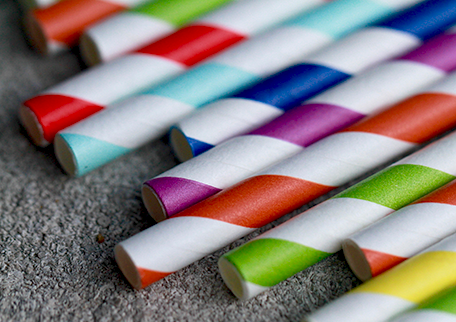Let’s Use Reusable Alternatives
This blog post was written by Liluye Staff Writer, Katie Hutchinson, who is a driven and compassionate environmentalist and humanitarian.
I’ve talked about them before, but let’s revisit them again… single-use items and how much of a challenge they are. The more I find myself writing articles about them, the more I find them popping up everywhere in my everyday life.
This week, I was in the park near my home, walking around and noticing all of the trash that littered the surrounding streets. There were paper plates, plastic silverware, small plastic see-through bags, and water bottles. I’m not sure if there is a study that correlates warm weather and the use of plastic, but I swear on nice days the amount of single-use plastic that accumulates seems to double.
It made me curious about the economic impact these single-use plastics have on the consumer and here’s what I found… according to Arcadia, a tech company that works to combat climate change and researches the impacts that are contributing to it, said, “Over the course of a year if you drank four bottles per day at an average cost of $2 per bottle, you would spend almost $3,000 per year just on water” (Arcadia, 2017). When you look at it that way, consider all of the other cons, well, it almost seems like a no-brainer. The water bottle you are being sold in the convenience store is most likely tap water, shipped and processed out of a factory, and from a place far away from you. The NRDC, a bipartisan agency that works to ensure air and water safety in the United States, discovered in a recent, 4-year study that a little over 25% of bottled water comes directly from the tap. Sometimes treated; other times not. 22% of the brands tested during this time frame had chemicals in the water that surpassed a state’s chemical additive limits (Postman, 2016). Water bottles also leave microplastics behind in the local water system and usually are used only one time before being discarded.
Now, think about all the single-use plastic items we purchase in just a year, then over a lifetime. What would happen if you bought just one of those items… one grocery bag… one straw… one cutlery set? What type of environmental footprint are they leaving? I don’t think we consider these questions enough. I certainly don’t. I know how much discipline it can take to consider one, let alone all of them. The planning it takes to always be prepared with a reusable fork and spoon can be unrealistic.
I personally have bought bottles of water from convenience stores. I’m human. However, the more I pay attention to the consequences of my consumerism and remind myself of the small acts that I can do to help the environment by using reusable items, the more my conscience is cleared. My own actions and choices to buy reusable items can’t change the world, but collectively we can make a huge difference.
If you’re stuck on what things you can easily switch to reusable alternatives, don’t worry, I have a list for you:
1. The classic water bottle: use a stainless steel container, ceramic mug, or glass.
2. Straws: there has been a big push in the past few years to use paper straws (yes, the ones that disintegrate in your mouth but make you drink faster to get more hydrated) but, there are also metal ones, too.
3. Shopping bags, carts, and totes: there are several, environmentally friendly options to choose from now, especially reusable shopping bags and totes.
4. Dryer sheets: you can purchase wool dryer balls. Who knew?
5. Makeup wipes or cotton pads: there is a whole new market for washable cloths that are gentle and do the trick.
6. Swedish dishcloths: this is my personal favorite. Seriously. If you are throwing away sponges, consider buying these dishcloths. I should be an ad writer for them. I’ve never believed in a product more.
7. Bee’s wrap: an alternative to plastic wrap.
8. Menstrual cup: a great alternative for tampons and pads… also a big fan. They changed my life.
9. Biodegradable trash and dog waste bags.
10. Food containers: opt for glass ones.
The list goes on and on. There are literally tons of blogs that have lists of reusable alternatives you’d never even think to consider. Do the research yourself and see what appeals to you and your lifestyle.
We don’t have to continue to buy the same set of plastic cups, or paper plates, for that matter. Let’s consider the great, reusable alternatives out there. The investment over time is cheaper, you’re reducing your carbon footprint, and you’re being a powerful role model for those around you. Together, we can choose reusable products and change how the world consumes. Let’s start with buying reusable items. It’s better for us and the environment!
Post Sources
• How many plastic water bottles does one reusable bottle save? Date: July 17, 2017. Written by: Unknown. (Arcadia.com)
• The Truth About Tap. Date: January 05, 2016. Written by: Andrew Postman. (NRDC)



